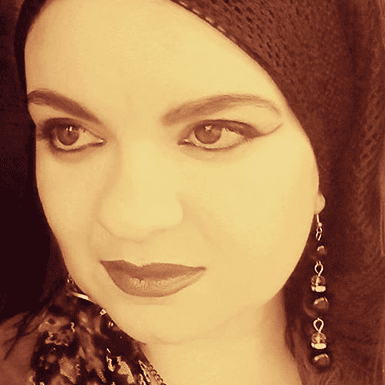Palestinian memory has become synonymous with the 1948 Nakba and Palestinian resistance. Yet there are other strands of memory which are overlooked. Farah Aboubakr’s treatise “The Folktales of Palestine” argues that Palestinian memory should not be framed solely through resistance and offers a detailed analysis of Palestinian folktales and their importance in shaping, nurturing and imparting Palestinian identity.
Palestinian dispossession requires a strong memory and a narrative based on continuity. Recollections of Palestine before 1948 are paramount, hence the importance of oral narratives and storytelling that promote a constant reference to Palestinian culture, land, traditions, villages and society. Palestinian folktales, argues Aboubakr, “are instrumental in strengthening communal bonds and in ensuring the survival of a people’s oral traditions”.
The book focuses on three main components: folktales and storytellers, the compilations in Arabic and English, as well as the conceptualisation of folktales when it comes to memory frameworks. Aboubakr analyses the folktales compilations in English and Arabic by Ibrahim Muhawi and Sharif Kanaana, showing how this strand of Palestinian memory has the potential to shed light upon the marginalised protagonists – women – within the framework of Palestinian identity.
Aboubakr’s analysis of both storytellers and compilers of folktales demonstrates their respective roles in utilising memory and language to preserve an important part of Palestinian history. While the folktales compilation is not imbued with the freedom associated with oral narrations, nonetheless it succeeds in filling an important gap in Palestinian culture and memory, especially when considering the loss of Palestinian narratives due to the previous absence of documentation, as well as the destruction wrought by Israel during the Nakba.
READ: Israel hides documents about crimes against Palestinians during Nakba
Drawing upon selected folktales from the collection “Speak, Bird, Speak Again”, Aboubakr shows how memory “works within the mechanism of a society”. One recurring observation throughout the book is the ongoing historical trauma as a result of the Nakba and the Palestinian yearning, or nostalgia, for pre-1948 Palestine, which is as much a unifying factor as the Nakba within collective memory. The Palestinian folktale contributes to strengthening these links by merging history and narration, described by the writer as “a social outcome, combining the narrator’s world and the historical under the imaginary plotting of events.”
From the Nakba onwards, nostalgia became an important component in combatting the ramifications of dispossession. Aboubakr states: “Given the paradoxical nature of nostalgia in the Palestinian case, nostalgia not only can be a form of longing or reminiscence, locking memories in an idealised past as a way to escape the present, but can also act as a buffer zone against forgetfulness and denial.”
Folktales therefore became a way for Palestinians to affirm their identity, as well as their social and cultural norms. Through various narratives that critique or remember social traditions and expectations, political representation, religion, return and memory, Palestinians were able to foster an important link between the pre- and post-Nakba generations.
READ: Palestinian oral history map launched
Throughout her analysis, Aboubakr demonstrates a recurring observation when it comes to Palestinian memory – the refutation of history as a linear process. Rather, the concept of “communities of memory” – especially when it comes to Palestinian refugees – indicates the level of absorption into one’s own memory of the events that shaped an entire population’s history. Folktales provide a method of transmission of such memory, building upon interplay between the personal and the collective which, in turn, also becomes an intrinsic part of Palestinian resistance.
Keeping in mind the diverse experiences of the Nakba, Aboubakr notes that Palestinian folktales vary in theme and narration. There is more emphasis on heroic accounts when it comes to the Bedouin population and Palestinian refugees, while in Palestinian rural areas the focus is on preserving land and cultural heritage. Across the narratives, however, women are identified as the main and reliable source of folktales’ transmission, as well as embodying several important and empowering roles.
Aboubakr writes that “Palestinian women are considered to be reliable observers of their society, since there is an immediate connection with their own lives and the overall social structure”. Their critique of social norms is evidenced in folktales depicting family and social relationships, sexuality and social perception. Folktales also reflect societal perceptions and influence when it comes to marriage, while anecdotes reflecting sexuality are able to transcend the usual confines of such narratives within society.
READ: The Palestinian History Tapestry exhibited in full at Palestine Expo 2019
Palestinian folktales also provide generations of Palestinian with the possibility of “mediating memory” as regards pre-1948, the Nakba and its aftermath, thus rising in direct opposition to the rupture forced upon Palestinians by Zionist colonisation. In folktales, memory is preserved through referencing sites of displacement, including the towns and villages which have been lost due to Israel’s settler-colonial expansion and destruction of Palestinian sites. In such instances, folktales provide an affirmation of “existence and continuation” while their narrators are considered “authorities of knowledge”.
Unlike narratives of Palestinian resistance, Palestinian folktales do not follow the same trajectory. The collection of folktales is a political statement confronting the erasure of Palestine, yet the stories themselves are a preservation of heritage. This lends itself to the political aspect of Palestinian resistance – the mobilisation of post-1948 generations to belong to what once were memory, identity and nationhood, as yet untarnished by colonialism.
There is much to glean from Aboubakr’s detailed and carefully-referenced work. Besides filling an important gap in academic work on Palestinian culture and heritage, the book enables the reader to comprehend the interwoven strands of Palestinian society and memory and how, without displacing the importance of Palestinian resistance, there are complementary and equally important means through which the historical trauma of the Nakba can be communicated with resilience.
READ: Palestinian grandmother wins legal battle to visit father’s grave in Israeli army base









